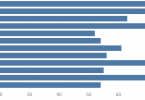By Lillian Eden
BU News Service
BOSTON — On a midsummer night on Interstate 495 North, Emily Ijams was driving home from work when her car, a 2013 Toyota Corolla, was totalled. The cause? A deer.
“It jumped right into my driver’s side headlight,” Ijams said. “I would have expected it to swerve my car out of the lane. So obviously I was really lucky.” No one was hurt except the deer, but the car behind her pulled to the side of the road with her to wait for a tow truck.
Ijams is not alone. Every year, hundreds of drivers in Massachusetts collide with deer.
Deer are found in both suburban and urban areas and can be a hazard to drivers. More than 2,000 incidents have occurred since January 2016, according to Massachusetts State Police. As of September 2019, 465 collisions had already been reported, which is on track to be higher even than the numbers reported last year.
Approximately 50 cases had increased each year. 626 collisions reported in 2016, followed by 674 collisions in 2017 and 726 in 2018. This pattern could be due to more people reporting collisions, not because of population changes for deer, said David Stainbrook, a deer and moose project leader for the Massachusetts Division of Fisheries & Wildlife.
Drivers are not required to call the police for a deer collision, so the actual number of collisions that occur may be much higher than the current data. Also, areas with fewer or no collisions could possibly due to people not reporting the incidents. State Farm Insurance estimated last year that the number of filed insurance claims due to collisions with deer is more than 10,000 for Massachusetts residents from 2017 to 2018.
“I can tell you anecdotally that it’s not uncommon for us to respond to reports of deer strikes that result in damage to vehicles,” said Lieutenant Thomas Ryan of Massachusetts State Police.
Stainbrook explained that an increase in collisions during certain parts of the year could be explained by one and 1.5-year-old deer, referred to as yearlings. Yearlings will either leave their mother, called a doe, in the spring or in the fall to establish
“These yearlings may be heading into new areas and crossing roads that they are unfamiliar with, posing a higher risk of getting hit by cars,” said Stainbrook in an email. The territory-seeking behavior can factor in the increase in collisions in June and November.
Stainbrook also said he would expect to see more deer collisions in Eastern Massachusetts. The difference, he explained, is that in Western Massachusetts, there are more avenues of access for regulated hunting to control the population of deer.
It should be noted that the Eastern part of the state is more densely populated by people, so the difference could also be due to more human activities, rather than because of a difference in population density of deer. The separation between east and west, he said, would be along I-495.
The overall number of reported collisions is greater in Eastern Massachusetts, but the towns with the greatest number of reported collisions, Oxford and Sturbridge, with 44 and 41 reported collisions since 2016, are both located in the Western part of the state. The three roads with the most reported collisions since 2016, with five each, are Route 495 South near Exit 10, Route 90 East near mile marker 108 and Route 95 North, south of Exit 3.
Although the subset of collisions that are reported might not represent the whole, the collision data does reveal some interesting patterns. Even if insurance companies said to look out for deer in the fall, drivers could consider being just as vigilant in the spring and summer.
- For the infographic designs – Blue:2016; Yellow:2017; Green:2018; Purple:2019.





